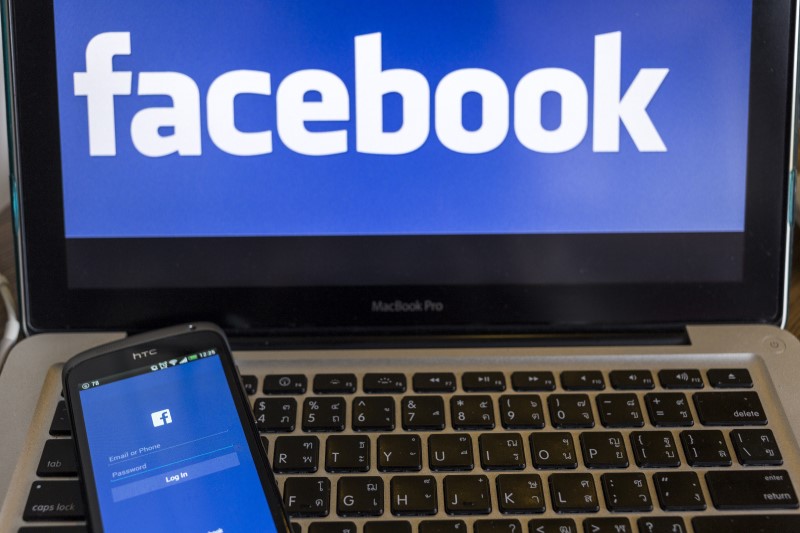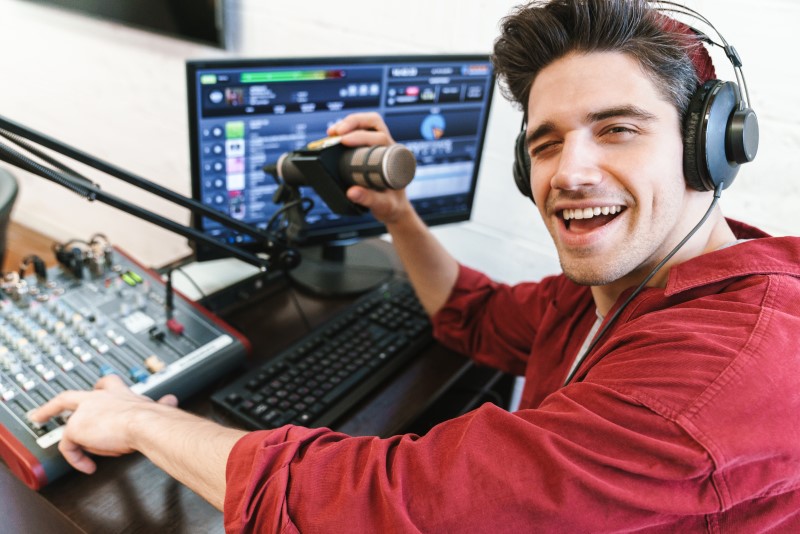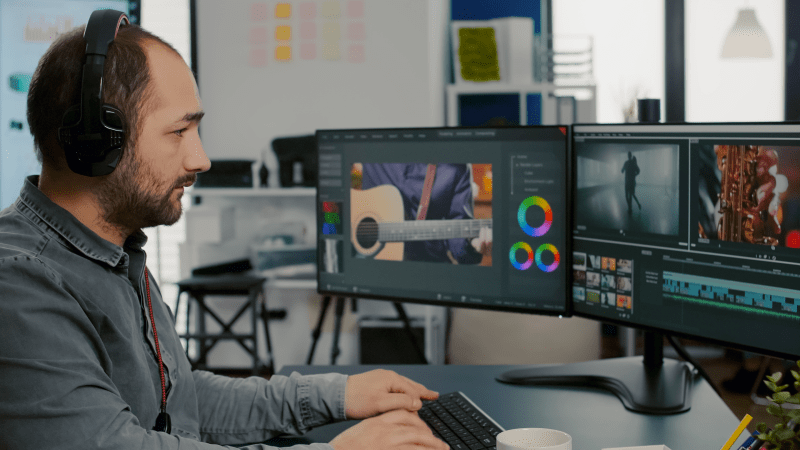Understanding the True Expense of Advertising and Marketing
The Expense of Marketing Expertise
Advertising and marketing play a crucial role in promoting music and reaching out to a wider audience. However, the cost of advertising and marketing music can add up quickly and often goes overlooked. Understanding the true expenses of these activities is essential for musicians, singer songwriters, music producers and other industry professionals who want to make informed decisions and allocate their resources wisely. In this publishing, we will list just 5 expenses that can be costly.
1. Public Relations: Hiring a publicist to manage media relations, secure interviews, and reviews, and organize press events can be a significant expense.
Hiring a publicist to manage media relations, secure interviews, and reviews, and organize press events can be a significant expense for a recording artist for several reasons:
• Expertise: Publicists are professional communicators and have the experience and contacts to effectively promote an artist and their music to the media. They have a deep understanding of the media landscape and the ability to craft compelling stories and pitches to secure coverage.
• Time: A publicist saves the artist time by handling all media-related tasks and activities. This allows the artist to focus on their craft and avoid getting bogged down with administrative tasks.
• Network: Publicists have a wide network of contacts in the media industry and can leverage their relationships to secure interviews, features, and reviews for the artist. They also have experience in dealing with the media and are equipped to handle any negative publicity that may arise.
• Event Planning: Publicists can also plan and execute press events, such as album launches and listening parties, which can be a significant expense on their own. They handle all the details, from venue selection to media outreach and management.
• Strategy: Publicists provide a strategic approach to media relations, helping the artist develop a long-term plan for visibility and exposure. They provide valuable insights and guidance to help the artist achieve their goals and reach their target audience.
In summary, a publicist offers a range of valuable services that can significantly enhance an artist’s visibility and exposure. However, these services come at a cost, and the artist must consider their budget when deciding whether to hire a publicist.
2. Social Media Management: Running social media accounts professionally and consistently, often with the help of a team, can also be costly.
a) Running social media accounts professionally and consistently can be costly for several reasons:
• Expertise and Skills: Running a successful social media campaign requires a wide range of skills, including content creation, strategy development, data analysis, and advertising. A social media management company typically employs a team of experts with these skills, who work together to deliver results. This expertise and the time required to deliver it comes at a cost.
• Time and Resources: Maintaining a consistent and professional presence on social media requires a significant investment of time and resources. Social media management companies must create and publish high-quality content on a regular basis, respond to comments and messages, and engage with the community. All of these tasks require a lot of time and effort, which social media management companies factor into their fees.
• Campaign Strategy: A social media management company must develop a comprehensive campaign strategy that takes into account the client’s goals, target audience, and budget. This requires research, planning, and coordination, which again adds to the cost of the service.
• Advertising and Promotion: Social media management companies often help clients to advertise their products or services on social media, either through paid ads or influencer marketing. These additional expenses are often factored into the fees charged by social media management companies.
The Cost of Running a Social Media Ad Campaign: Understanding the Potential Expenditure
a) Social media platforms have become the go-to marketing channels for businesses of all sizes, and it’s easy to see why. With billions of active users, social media platforms offer advertisers the ability to reach a massive audience in a cost-effective manner. But while social media advertising can be relatively inexpensive, it is important to understand the potential cost of running a social media ad campaign.
b) Cost Factors of Social Media Ad Campaigns
c) The cost of social media ad campaigns varies greatly depending on several factors, including:
d) Platform: Different social media platforms have different ad prices, and some platforms are more expensive than others. For example, running an ad on LinkedIn is generally more expensive than running an ad on Facebook.
e) Target Audience: The cost of social media advertising is often influenced by the target audience. If the target audience is large and general, the cost of running an ad will be lower. However, if the target audience is smaller and more specific, the cost of running an ad will be higher.
f) Ad Type: The type of ad you choose to run will also impact the cost of your social media ad campaign. Some ad types, such as video ads, are generally more expensive than other ad types, such as image ads.
g) Ad Location: The location where the ad will be displayed also influences the cost of social media advertising. For example, running an ad in the newsfeed is generally more expensive than running an ad in the right-hand column.
h) Ad Duration: The duration of the ad campaign will also impact the cost of social media advertising. Running a longer ad campaign is generally more expensive than running a shorter ad campaign.
i) Competition: The competition for ad space in a particular industry or niche also influences the cost of social media advertising. If there is a lot of competition for ad space, the cost of running an ad will be higher.
j) Tips for Managing the Cost of Social Media Ad Campaigns
k) To manage the cost of social media ad campaigns, it is important to understand the factors that influence ad prices and to take a strategic approach to advertising. Here are a few tips to help you keep the cost of your social media ad campaign under control:
l) Set a Budget: Before launching a social media ad campaign, set a budget for the campaign and stick to it. This will help you avoid overspending and ensure that you get the most value for your money.
m) Choose the Right Platform: Choose the right social media platform for your ad campaign based on your target audience, ad type, and budget. Don’t be afraid to experiment with different platforms to see which one works best for your business.
n) Target the Right Audience: Make sure that you are targeting the right audience with your ad campaign. This will help you reach the people who are most likely to be interested in your product or service and reduce the cost of your ad campaign.
o) Use the Right Ad Type: Choose the right ad type for your campaign based on your goals, target audience, and budget. Video ads can be expensive, but they are also highly effective, so consider using them if they fit within your budget.
p) Optimize Your Ad Campaign: Regularly monitor and optimize your ad campaign to ensure that you are getting the best results for your money. Make adjustments to your ad campaign as needed to improve its performance and reduce its cost.
In conclusion, social media advertising can be a cost-effective way to reach a massive audience and promote your business. However, it is important to understand the potential cost of social media ad campaigns.
• Tools and Technology: Running a social media campaign requires access to a range of tools and technology, such as social media management platforms, graphic design software, and analytics tools. The cost of these tools and technology is often passed on to the client in the form of higher fees.
In conclusion, the cost of hiring a social media management company will depend on the size and scope of the campaign, the experience and reputation of the company, and the tools and technology they use. However, it can be a significant expense for many businesses and individuals looking to establish a strong and consistent presence on social media.
3. Radio promotion:
A radio promoter must determine if a song is good for terrestrial radio stations or internet radio stations by considering several factors:
• Radio Format: Radio formats, such as Christian and Gospel, pop, rock, hip hop, country, and urban, are different and have specific audiences. A radio promoter must understand the radio format and the target audience of the station to determine if a song is a good fit.
• Popularity: The popularity of a song is a significant factor in determining if it’s good for radio airplay. A radio promoter will consider the current popularity of the song, its potential for popularity, and whether it’s a good fit for the target audience of the station.
• Lyrics: Lyrics play a significant role in determining if a song is good for radio airplay. A radio promoter will consider the content of the lyrics, the language used, and whether it’s appropriate for the target audience.
• Sound Quality: The sound quality of a song is important for radio airplay. A radio promoter will evaluate the sound quality of the song and determine if it’s up to the standards of the station.
• Competitor Analysis: A radio promoter will also consider the competition in the market and determine if the song will stand out and be competitive with other songs in the same genre.
• Airplay History: The airplay history of a song is also important. A radio promoter will look at the airplay history of the song, including the number of spins, audience engagement, and the artist’s history to determine if the song is a good fit for radio airplay.
• Digital Radio Platforms: For internet radio airplay, a radio promoter will consider the popularity of the song on digital platforms, such as Spotify and SoundCloud, and determine if the song has potential for digital radio airplay.
• Radio airtime is a valuable commodity and radio stations have limited airtime to sell, making it a premium service.
• The cost of a radio promoter includes their expertise in selecting the right music to play on the radio, their ability to negotiate with radio stations, and their relationships with DJs and other industry players.
• The process of promoting a song to radio involves many steps, including creating and distributing promotional materials, securing radio interviews, and coordinating promotional events, which can be time-consuming and resource-intensive.
• Effective radio promotion often requires a significant investment in time and resources, making it an expensive endeavor for many artists and labels.
In conclusion, the cost of hiring a radio promoter depends on the level of promotion they provide, their reputation in the industry, and the reach of the radio stations they work with. They use a combination of these factors to determine if a song is good for terrestrial radio stations or internet radio stations. By evaluating the song’s popularity, lyrics, sound quality, competition, airplay history, and potential for digital radio airplay, radio promoters can make informed decisions and help songs reach a wider audience.
4. Video editing: Producing high-quality video adverts with professional license footage, actors, and special effects can be expensive.
Video advertisements are a powerful tool for promoting your brand, product, or service. A well-produced video ad can help you reach a wider audience, engage your customers, and drive sales. However, creating a high-quality video ad is not cheap. Hiring a professional video editor to produce your video ad can be a significant financial investment, so it’s important to understand the financial factors to consider when making this decision.
a) Cost of Video Equipment and Software
b) The cost of video equipment and software is one of the biggest expenses associated with producing a video ad. Video editors use high-end cameras, lighting equipment, and editing software to create professional-quality videos. The cost of these tools can add up quickly, and you may need to invest in additional equipment or software if you want to create a high-quality video ad.
c) Hourly Rate of the Video Editor
d) Another financial factor to consider when hiring a video editor is their hourly rate. Video editors typically charge anywhere from $50 to $150 an hour for their services. The cost of their services will depend on their level of experience, their reputation, and the complexity of the project. Keep in mind that hiring a highly experienced video editor will likely cost more, but it will also ensure that you receive a high-quality product.
e) Length of the Video
f) The length of the video is another financial factor to consider. The longer the video, the more time the video editor will need to spend on editing, and the more expensive the project will be. To keep costs down, consider creating a shorter video ad that conveys your message in a concise and impactful way.
g) Location of the Shoot
h) The location of the shoot is another financial factor to consider. If you want to film your video ad in a studio, you’ll need to rent the space, which can be expensive. If you prefer to shoot on location, you’ll need to factor in the cost of travel and accommodations for the video editor and their team.
i) Post-Production Services
j) Post-production services, such as color correction and special effects, can also add to the cost of producing a video ad. These services are typically billed by the hour, and the cost will depend on the complexity of the project. To keep costs down, consider limiting the number of post-production services that you need.
k) Advertising Platforms
In addition to the cost of producing the video ad, you’ll also need to factor in the cost of promoting it. Video ads can be promoted on various platforms, such as YouTube, Facebook, and Instagram. The cost of promoting your video ad will depend on the platform you choose, the target audience, and the length of the campaign. To keep costs under control, consider working with a media buyer or an advertising agency to optimize your advertising budget.
In conclusion, hiring a video editor to produce a video ad can be a significant financial investment. To ensure that you receive a high-quality product and keep costs under control, it’s important to consider the cost of video equipment and software, the hourly rate of the video editor, the length of the video, the location of the shoot, post-production services, and the cost of promoting the video ad. By understanding these financial factors, you can make an informed decision and create a video ad that promotes your brand, product, or service in the best possible way.
5. Promotional materials: Developing promotional materials like flyers, posters, and album packaging design can also add to the overall cost.
Overall, advertising and marketing require a significant investment, but it is essential for artists to reach their target audience and establish a strong brand.
















